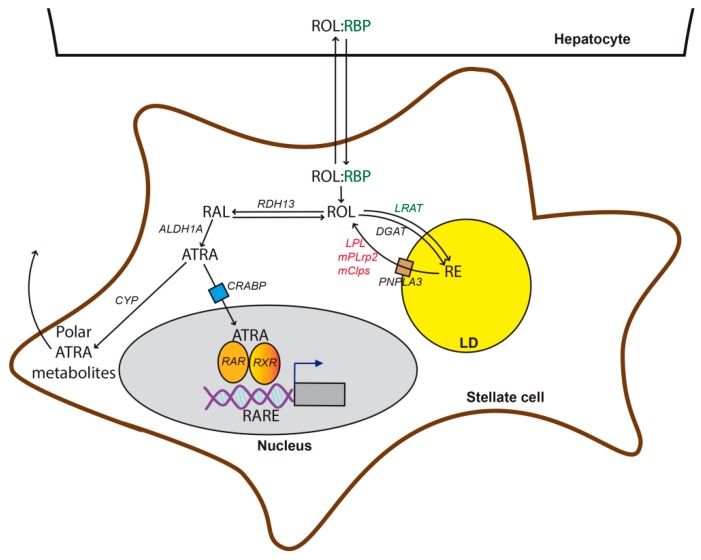Figure 2.
Scheme of retinol metabolism. Retinol (ROL) is imported from hepatocytes into HSCs being bound to retinol-binding protein (RBP). Upon its release, it is esterified by lecithin:retinol acyltransferase (LRAT) or diacylglycerol O-acyltransferase 1 (DGAT) and stored in lipid droplets (LD). Mobilization of retinol from lipid droplets is mediated by several enzymes including patatin-like phospholipase domain-containing protein 3 (PNPLA3), lipoprotein lipase (LPL), pancreatic-related protein 2 (mPlrp2), and procolipase (mClps). Retinol can be oxidized to retinal by retinol dehydrogenases (RDH), and the aldehyde can be oxidized to form all-trans retinoic acid (ATRA) by aldehyde dehydrogenase 1A (ALDH1A) isoforms. ATRA can be transferred to the nucleus when bound to Cellular retinoic acid-binding protein (CRABP), where it induces nuclear RA receptors (RARs) or retinoid X receptors (RXRs) to induce transcription of genes carrying retinoic acid response elements (RARE) in their promoters. Alternatively, ATRA can be metabolized by cytochrome P450 isoforms, and the resulting products are exported from cells. Genes that are up- or down-regulated during activation of HSCs are shown in red and green, respectively.

